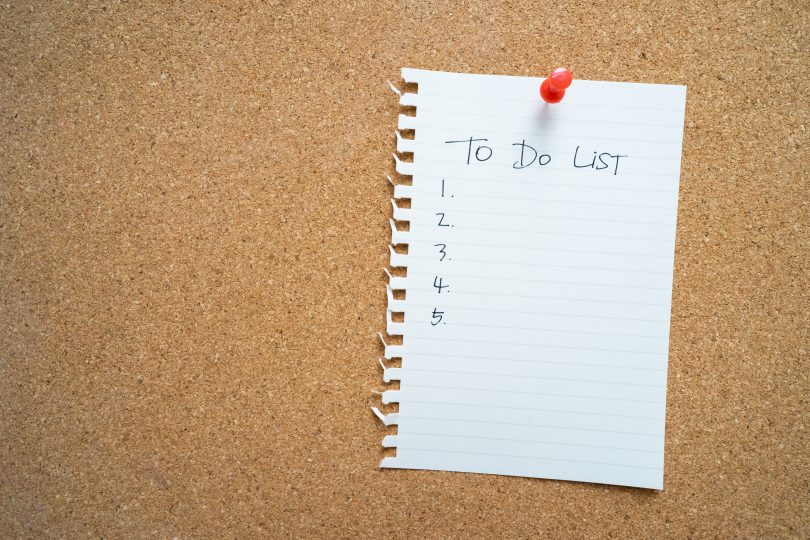While youth baseball continues to get more expensive, we want you to know that your college baseball recruiting process doesn’t have to. If you have little or no money to spend on expensive showcases, tournaments, travel baseball, or recruiting help, don’t worry! Even on a tight budget, you can get recruited to play college baseball if you’re willing to put in the work and KPB is here to provide you with all the free help you need to do it! If you have access to the internet (most local or school libraries have free internet), you are in great shape. The keys to getting recruited are working hard in the weight room to gain strength, finding ways to continue developing your baseball skills, having persistence in the face of adversity, and putting together a solid game plan. Luckily, all these things are free! Here is a six-step plan to help you find your college team without spending a dime:
1. Make a plan
Put together a comprehensive plan for what you will do from now until graduation. You will want to make sure you have everything you need before interested coaches contact you. KPB yearly checklists and KPB Recruiting 101 resources can be extremely helpful in reminding you what you should be doing and when. Here is a list of things you should make sure you have/do:
- If the SAT or ACT are required, enroll in the fee waiver program (available for low income 11th and 12th graders) for the SAT or ACT, use the free online tools to prepare and take the SAT/ACT.
- Make sure you always have an electronic copy of your test scores/updated transcript you can email coaches.
- Create an email address that is simple and can serve as your contact address for coaches. Use your name and grad year if available. For example: JonSmith2018@gmail.com.
- Create an email template that you can (and MUST) change to personalize for each school you are interested in. For best practices on emailing coaches and what to include in emails, read our article on contacting coaches.
- Use Twitter to help create exposure and interact with college coaches. We break down how to use social media to get recruited here. It’s college baseball’s best tool, and it’s free!
- Be organized. Create a plan for keeping coaches updated with your game schedule and how things are going. An email update every 6-8 weeks or so can help keep you fresh in a coach’s mind, even if he is not responding. If you are communicating directly with a coach at a program of interest, err on the side of over-communication rather than not keeping in touch enough.
- Stay on top of your school work. Get ahead and stay ahead. Having good grades and test scores keep a lot of options open and coaches are more likely to take chances on kids who show they will not be a problem in the classroom or off the field. Use these KPB academic resources to help!
2. Surround yourself with a good support group
You may not have the financial resources of some of your peers, but you still have a lot of great personal resources you can use. Create a “team” of people who can provide guidance, read over emails, serve as references or call coaches on your behalf, and much more. Family members, parents, and counselors are great resources. Trustworthy coaches who can vouch for your playing ability are some of the best people to have on your team. If you have a coach you trust who is well respected in the game, use him! If you don’t, use a well respected coach who is familiar with the way you play from another team in your league or area. You will want to make sure this person knows you well enough to answer questions about your ability and character, if possible. Seeking out other coaches shows initiative and looks good, especially when you have multiple coaches to support you. Make sure you talk with your coach or other coaches and ask if you can use them for a reference before doing so. That way they can think about what they would want to say ahead of time and are not caught off guard. Here’s a great article on the importance of networking and how you can leverage your relationships.
Another thing that has proven successful for many recruits is getting feedback from scouts or organizations that usually charge for their services. Email the scout or player director directly and explain your financial situation and see if they will give you some informal comments or an informal evaluation. Sometimes there are scholarships available for camps and showcases as well.
3. Use social media as a free recruiting platform and share video
Video and social media are two cost-free opportunities to show college coaches what you can do and kickstart the recruiting process. In the age of information (and Covid-related dead periods), a recruiting video shared the right way on social media can be just as good as any showcase or camp. If you have nothing to spend on recruiting, using video and sharing it on social media is a must. We explain why video is so important here and how to use social media to get recruited in this must read article here.
All you need to make your own successful recruiting video is a smart phone and a teammate or family member. We break down what to include in your video, how to film and edit your video, and how to use your video to get recruited step-by-step in our free online course, Creating a Successful DIY Recruiting Video. Enroll for free today by clicking HERE!
Even if coaches don’t offer you directly from your video, video gives them an opportunity to evaluate skills, size, athleticism, and other things attributes that can help move the recruiting process forward. If they see something they like, it can entice them to start recruiting you or come see you play. Coaches don’t care if the video is fancy or edited, they just want to see your skills. Take KPB’s online course to learn everything you need to know about creating a video on a shoestring budget or check out our other video resources HERE.
4. Cast a wide net and be great at communicating and responding to coaches
Many players fail to get recruited because they target schools at the wrong level or that are the wrong fit. Don’t make that mistake. Reach out to programs of interest at different levels and divisions, and never turn away a program because of its level designation. Be open to all options and interest, you can always narrow things down as you get closer to making your final decision. Once you are in touch with coaches, one of the best ways to stay fresh in their minds is to interact with them on a regular basis. An email update, providing a schedule, and reiterating interest in their schools can help push the recruiting process along. Even if a coach hasn’t seen you play yet, the borderline annoying correspondence is more likely to get him to give you a serious look and evaluation. An email every 4-6 weeks during the spring season or summer is good. During the winter off-season, checking in once or twice is fine.
5. Continue to focus on development and create a strength and conditioning plan
Continue to develop and improve as a player. An important part of recruiting is showing that you are improving between the first time a coach sees you and every time after that. Focus on training and development and work towards playing at the highest level you can while still having fun and enjoying it. Whatever resources you do have, put them into your development. Exposure means nothing if you don’t have the skills that college coaches are looking for. You must develop before you will get noticed. If there is a field near your house, simply showing up and being around when games happen can make you familiar with coaches and possibly provide you with some new opportunities. You never know what can happen when you show up.
It is also essential to incorporate strength and conditioning into your development plan. If you don’t have access to a weight room at your high school, there are ways to improvise using body weight or a local playground. Not only will a strength and conditioning plan help you maximize your baseball talent, it also provides the base for more demanding workouts you will experience in college. College coaches want physical players, so the faster and stronger you are on the baseball field, the better. The exercises described in this guest article by physical therapist Alex Wirta are as good a place as any if you don’t know where to start.
6. Be a great teammate and take care of business on and off the field
Coaches want great people in their programs. Being a great teammate goes a long way. Always hustle, always pick your teammates up, and always play the game hard and clean. Take care of business in the classroom and don’t get into any trouble off the field. If you do these things, there’s a good chance you are well on your way to a college program.
By doing all the little things in the recruiting process right and actively recruiting for yourself, you greatly increase your chances of finding a college program. The best part about it? It costs absolutely nothing. If you want more information on cost-effective alternatives in the recruiting process, read this article here.
Note: Don’t forget that all of KPB’s resources are free to all players and parents. Use Recruiting 101 for self-guided help through each stage of the recruiting process and the KPB website to get important information and advice on the recruiting process and player development. Don’t hesitate to email us with questions. We are here to help you!







